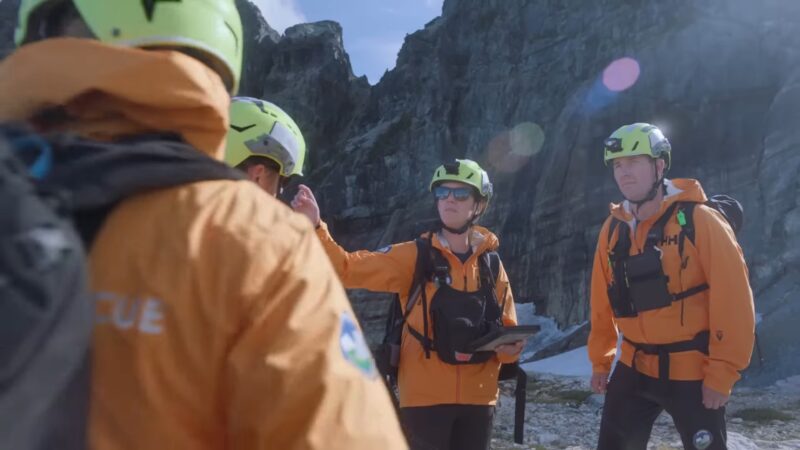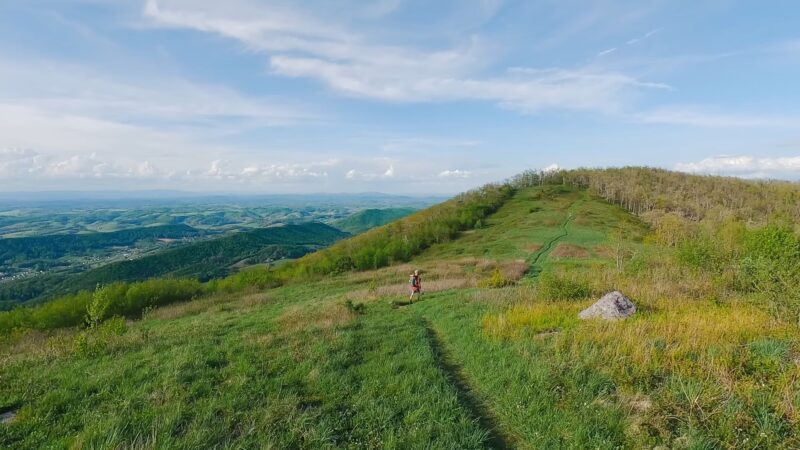The Enigma of Disappearances: Factors and Theories
The Appalachian Trail, spanning over 2,190 miles, is not just a hiker’s paradise but also a setting for baffling disappearances. The reasons behind these vanishings range from natural hazards to human error.
Factors like unpredictable weather, challenging terrain, and wildlife encounters pose significant risks. Additionally, the psychological and physical strain on long-distance hikers can lead to disorientation and poor decision-making.
Theories about these disappearances often include getting lost, injury, foul play, or voluntarily disappearing. Each case presents its unique set of circumstances, making the mystery all the more intriguing and complex.
The Role of Search and Rescue Operations

In the wake of these disappearances, search and rescue operations play a crucial role. These operations involve a coordinated effort between local authorities, park services, and volunteers.
The challenging terrain and vast wilderness of the Appalachian Trail often make these searches arduous and time-consuming. The use of advanced technology, such as drones and GPS tracking, has enhanced the efficiency of these operations.
However, the unpredictable nature of the trail and its environment often leads to searches being called off without resolution, adding to the trail’s mystique and the agony of the families involved.
Learning from the Past
The stories of missing hikers on the Appalachian Trail serve as a stark reminder of the importance of safety and preparedness. It’s crucial for hikers to understand the risks and plan accordingly.
This includes carrying adequate supplies, informing others of their itinerary, staying on marked trails, and being aware of weather conditions. Additionally, learning basic survival skills and carrying a GPS or emergency beacon can be lifesaving.
These stories also highlight the need for increased awareness and education about the potential dangers of hiking in remote areas.,
The Most Notable Case of Disappearance
Geraldine Largay, a 66-year-old hiker known as Gerry, faced a harrowing and ultimately tragic experience after getting lost on the Appalachian Trail in 2013. Despite surviving for 26 days, her situation ended in tragedy.
The details of her final days have come to light through journal entries and text messages, painting a picture of her struggle for survival and her poignant acceptance of fate.
The Disappearance and Survival Effort
Geraldine Largay disappeared on July 22, 2013, after straying from the trail. Her husband, George Largay, was supporting her through her journey, which was part of a “thru-hike” of the 2,168-mile trail.
Despite her experience and preparation, including a course on hiking the trail, Largay lost her way and was unable to find her way back.
Desperate Attempts for Rescue
In the aftermath of her disappearance, Largay made several attempts to contact her husband via text, but due to poor cell service, these messages were never sent. She tried to find a higher ground to send an SOS and even attempted to set fires for rescue signals.
Her journal entries, found later, expressed her wish for her family to know her fate if her body was found.
The Discovery and Aftermath
Largay’s remains were discovered in October 2015 by a forester working near the trail. Her campsite, hidden under dense tree cover, was located less than two miles from the Appalachian Trail. The medical examiner concluded that she died of exposure.
Her family, in a statement, expressed gratitude for the dedication of the search teams and asked for privacy as they continued their grieving process. This story of Geraldine Largay not only adds to the mysteries of the Appalachian Trail but also serves as a stark reminder of the unpredictability and dangers of such treacherous hikes.
It underscores the importance of preparedness, the limitations of technology in remote areas, and the relentless efforts of search and rescue teams in these challenging environments.
Other Cases
We’ll explore some other examples of people disappearing on the trail.
The Disappearance of Dan Moore
The case of Dan Moore, an experienced hiker and outdoorsman, adds to the mystery of the Appalachian Trail. On August 19th, 1982, Moore embarked on a hike, never to be seen again.
His disappearance remains one of the most perplexing and mysterious cases in the history of the trial. Despite extensive searches and investigations, the circumstances surrounding his vanishing act continue to baffle experts and enthusiasts alike.
The Disappearance Of Mikelle Roge

One of the more recent and unsettling cases on the Appalachian Trail is the disappearance of Mikelle Roge. Roge, an avid and experienced hiker, set out on what was supposed to be a routine trek along a well-traveled section of the trail.
However, she never returned, sparking a massive search and rescue operation. Her last known contact was a text message to a friend, mentioning her excitement about the hike.
After that, all communication ceased, and Mikelle vanished without a trace. The search for Mikelle Roge involved local authorities, volunteers, and even other hikers who were on the trail at the time.
Despite extensive efforts, including the use of drones and search dogs, no sign of Mikelle or her belongings was found. The lack of clues has led to various speculations, ranging from an unfortunate accident to the possibility of an encounter with a dangerous individual.
Mikelle’s disappearance has had a significant impact on the hiking community, raising questions about safety and the risks associated with solo hiking. It has also led to discussions about the need for better tracking and communication technologies for hikers. Her case remains open, and her family and friends continue to hope for answers.
FAQ
What are the most common causes of disappearances on the trail?
The most common causes include getting lost due to disorientation, accidents resulting from challenging terrain or weather conditions, and, less frequently, encounters with wildlife or foul play.
How does it compare to other hiking areas in terms of safety?
While the Appalachian Trail offers a unique and scenic hiking experience, it also presents challenges such as long stretches of remote areas, variable weather conditions, and rugged terrain, making it more challenging in terms of safety compared to some other well-traveled trails.
What steps have been taken to improve safety on the trail?
Improvements include better signage and trail maintenance, increased education and awareness programs for hikers, enhanced communication systems along the trail, and more accessible information about weather and trail conditions.
Are solo hikers more at risk of disappearing?
Yes, solo hikers are generally at a higher risk due to the lack of immediate support in case of emergencies, difficulty in self-rescue, and challenges in communication if they get lost or injured.
How effective are search and rescue operations at the location?
Search and rescue operations are highly coordinated and involve advanced technology, but the trail’s vastness and diverse terrain can sometimes limit their effectiveness, especially in cases of delayed reporting or extreme weather conditions.
What can hikers do to minimize the risk of disappearing?
Hikers should plan their route carefully, inform someone about their itinerary, carry a GPS or emergency beacon, stay on marked trails, be prepared for changing weather conditions, and have basic survival skills. It’s also advisable to hike with a partner or group.
Final Words
The Appalachian Trail, with its breathtaking vistas and challenging terrain, remains an enigma in the world of hiking and outdoor adventure. The question of how many hikers have gone missing along this trail is one without a definitive answer.
While some sources cite 10 murders since 1974, the actual number of unsolved disappearances could be higher, contributing to the trail’s mystique and the haunting questions that linger in the minds of hikers and their loved ones. Over the past five decades, both the Appalachian Trail and the Grand Canyon have been the scenes of mysterious vanishings.
These cases, often leaving no trace and no answers, have fueled various theories, from accidents and foul play to more speculative ideas like paranormal activity. Each disappearance adds a layer to the trail’s complex history, intertwining natural beauty with an undercurrent of danger and uncertainty.
The enigma of these disappearances is not just a matter of statistics or sensational stories; it underscores the unpredictable nature of the wilderness and the importance of preparedness and respect for the natural world. Factors like unpredictable weather, challenging terrain, and the psychological toll of long-distance hiking contribute to the complexity of these cases.
They serve as a reminder that adventure in such remote areas comes with inherent risks.
